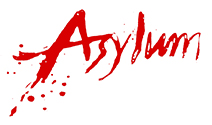Back in 1993, the Zito Trust was formed by the wife of Jonathan Zito who was killed by Christopher Clunis in a London Underground station in 1992.

Clunis had been admitted to psychiatric hospital on several occasions, usually for very short periods, and often experienced homelessness on discharge, never receiving the intensive support he needed. The mainstream media seized on this tragic incident, juxtaposing the racist imagery of the ‘big dangerous black man’, against Jane Zito, the newly-wed blonde white woman, whom they embraced as an ideal victim and spokesperson, championing the Trust she founded.
The Zito Trust was controversial because it included appeals for compulsory treatment orders which many activists felt were an assault on our civil liberties. Indeed a series of campaigns against coercion brought activists together in the 1990’s, helping to inspire survivor organisations like Mad Pride. Pete Shaughnessy, one of the founders of Mad Pride and Reclaim Bedlam in the UK, threw himself into mad activism, after his younger sister was killed by her boyfriend who was suffering from paranoid psychosis. Pete’s advocacy in Broadmoor high secure hospital, and his campaigning against CTOs, showed that appealing for more coercion isn’t an inevitable response to such tragedies by bereaved families.
In 2009, following reforms to the Mental Health Act which introduced CTOs, and the introduction of the Assertive Outreach Teams, the Zito Trust disbanded because they believed they’d achieved the changes they’d sought. For better or worse, it’s clear that the Clunis/Zito tragedy (and the resulting campaign) profoundly impacted mental health services.
Now, a similar tragedy has hit the deadlines. Last year, Valdo Calocane killed three people and seriously injured several others in Nottingham city centre. He was known to mental health services (having been sectioned 3 times previously) but wasn’t receiving any support or treatment at the time of the attack. Whilst many radical mental health activists opposed the Zito Trust, because of its association with CTOs, there was at least some recognition that Clunis was unwell (rather than bad or evil) and in need of support, not punishment. Jane Zito herself considered both her husband and Clunis as victims of a dysfunctional mental health system. By contrast, coverage of Valdo Calocane has focused, less on the failure of mental health services, and more on the sentence he received: manslaughter on the grounds of diminished responsibility, rather than murder.
Media commentators, including bereaved family members, have expressed outrage that this ‘evil monster’ (sic) has been sent to hospital, rather than jail. One LBS report referred to the ‘plush’ and ‘cushy’ conditions that awaited the ‘triple killer’ inside Ashworth special hospital.
Whilst the grief and anger of bereaved families is understandable, this response fails to recognise the fact that patients usually spend longer inside high secure hospitals than they would in jail: many get diverted to prison after many years, or never get discharged at all. Christopher Clunis was never released and died in a medium secure hospital in 2021, 30 years after tragically killing Jonathan Zito.
It is often said that extreme cases don’t make good laws. It would be unfortunate if knee jerk reactions simply resulted in more coercion across the board, especially given the greater levels of coercion experienced by black people in the mental health system. However, whilst these incidents are still rare, and this was a particularly horrific incident, it is not an isolated example. The wider issues deserve our attention. These incidents, and they way they are responded to, don’t happen in vacuum.
Responses to tragedies can all to easily be weaponised and used to bolster our existing beliefs. Apart from the vitriolic calls for retribution, this tragedy has been used to suggest we should never have closed the Asylums; that patients who refuse treatment should be forced to comply; or that psychiatry is to blame for medicating and diagnosing in the first place. Compelling or cajoling people to engage with services or comply with treatment, particularly if they have a history of violence, might prevent some of these incidents. However, it would likely cause other problems for people caught up in the compulsion net, including black men who are already more likely to be forcibly medicated, treated, detained – and criminalised.
I’ve suggested before in this magazine that, rather than compelling individuals to accept treatment, maybe we need to demand services are compelled to provide support. I recognise, however, that this might throw up other problems – not least it would depend on the nature of the support provided. Community Treatment Orders are a case in point. In practice, they are sometimes used to ensure that services provide some support – in a context where society’s collective responsibility for people’s suffering has been replaced with the demand that individuals take responsibility. Theoretically at least, CTOs could include all kinds of support, although in practice have become merely medication orders. Assertive Outreach Teams provided more variety of support, but most of them no longer exist.
Another difficult issue to grapple with is that even if alternative, non-coercive and non-medicalised crisis services were widely available (which I believe they should be), it is unlikely that highly disturbed patients would engage with them freely. When I was Chair of the Soteria Network, I remember a service user asking whether he could opt to be ‘sectioned’ in a Soteria House. He knew that when experiencing a psychotic break, he would be unlikely to stay there voluntarily, even though he believed he would benefit from it in the long run.
This might seem like a challenging request for a service based on non-coercive principles. However, it could be workable with something like an Advanced Directive in place, a mechanism to set out what support you’d prefer in a crisis. This could be more consistent with patient autonomy and freedom, although not always easy to implement in practice.
This also highlights the fact that coercion and consent are not always simple either/or binaries, especially in practice. For example, ‘voluntary’ support can be experienced as coercive, whilst coercion could be considered consensual, as the Soteria request exemplifies. It also reveals the inadequacy of the other binary options presented by society. For instance, that people are either mad or bad; innocent or guilty; and should either be treated or punished; jailed or hospitalised. Are alternatives to these binaries still so unimaginable? In the current political context, with such limited options on offer, perhaps it’s no surprise that public opinion seems to have swung the other way.
Extreme cases might not make good laws, but I hope they can at least inspire collective activism that takes these dilemmas seriously.
Hel Spandler is Editor of Asylum magazine, writing in a personal capacity.
This is a Sample Article from the Spring 2024 issue of Asylum Magazine. To read more, subscribe to Asylum Magazine.
